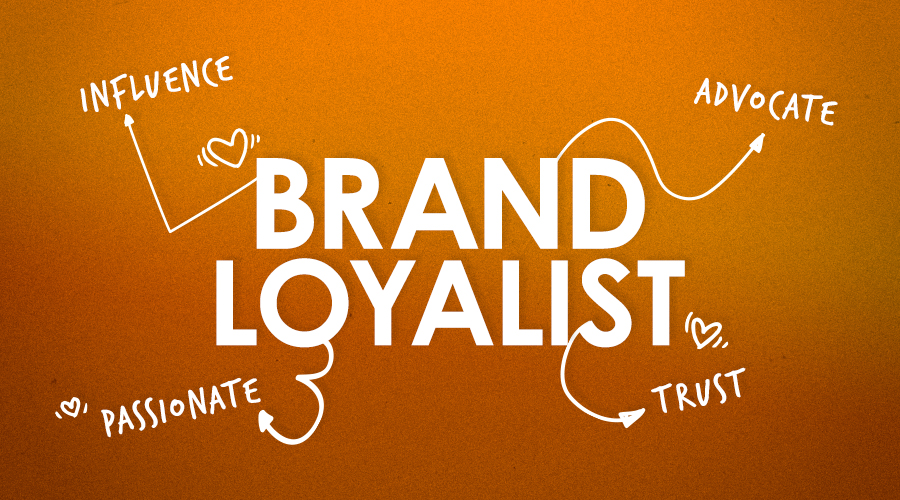There’s a lot of talk in the marketing space about brand loyalists: who they are, why they’re important, how to identify, develop and nurture them.
A passionate “loyalist” has a connection to your brand like no other. They rave about you to everyone they know, and maybe even those they don’t. They excitedly share the value of your products and services, usually without being asked. They encourage people to do business with you (and to keep doing it!).
The bottom line? Brand loyalists help build awareness, generate leads and increase sales. And that’s good for your bottom line.
Now, what if we told you that your most passionate brand loyalist – the one who can do all these things and more – was sitting right next to you?
The truth is, they are.
Your employees can be one of the most impactful advocates for your brand, with the power to change the way that someone feels about your brand. That’s why it’s important to invest in them as a key audience in any campaign.
Often overlooked, your employees are an audience that carry more weight than you realize.
Employees have a broad-reaching sphere of influence
You might be thinking, how many people can one employee really influence? The answer? More than you might think.
Employees in customer-facing roles can directly influence your customer’s perceptions. But all of your employees have the opportunity to influence a wider community of potential customers as they talk with family, friends and neighbors, both in person and on social media. Their influence can also play a role in your recruitment and retention efforts.
People talk. Your employees are no exception. So why not give them something to talk about?
Why employees make the best loyalists
Interestingly, people (the same people who are your current or potential customers) will trust other people before they trust a brand.
In fact, participants in the 2018 Edelman Trust Barometer ranked employees as a more credible source of information about a company than the company itself (that includes the CEO and Board of Directors).
Trust is central to every brand because, without it, people will not buy from you.
How can you use this to your advantage? Make sure employees are hearing the messages you want shared within their sphere of influence. In other words, make them part of your process. Let’s look at an example from one of our clients.
When Knapheide embarked on a rebranding project a few years ago, they made the conscious decision to communicate with their employees in a way that not only made them feel included, but also armed them with messages they could share. And they did that early in the process.
Their “Never Settle” campaign, which ultimately reached their customers, started in-house with participation in helping to enhance their brand story, building pride in the long history and accomplishments of the company. It was inspirational and was reflected in the conditioning in the workplace. This commitment to internal audiences helped employees see their unique role in living the brand promise and its impact both inside and outside the company walls.
Knapheide created an elevator speech that was simple and consistent with key brand elements. They brought it to life internally when they gave employees ownership as they were encouraged to add a statement or two that communicated a personal connection between their role and the Knapheide brand.
But, that was just the first step.
Keep sharing your brand’s “goodness” with your employees
The Knapheide team knew that for employees to be fully engaged with their brand, they needed to live it. This started with a top-down approach. Leadership stayed accessible to employees by sharing messages each month in a blog penned by one of the company’s top leaders. This voice to the employees was a powerful way to communicate that the commitment the company was asking for from their employees was supported at every level.
This strategy became a living mindset. They continued to reinforce the brand in meetings and trainings, which in turn helped reinforce and maintain momentum. It also opened the door to finding additional creative ways to share the brand with their employees.
One way, in particular, was ensuring messages were housed where employees could easily receive them. Knapheide used an enhanced employee portal as a key internal channel for sharing their brand and culture. Kiosks and brand ambassadors were put in place for employees who didn’t have computer access so that everyone would have an easy way to attain (or find out more about) key information or documents to do their job. Traditional communication methods, like newsletters mailed to homes, were incorporated to both enhance the messages from the portal and encourage employees to share beyond the company walls with family and neighbors.
Finally, Knapheide gave their employees a unique experience with the brand rollout. As a symbol of their commitment to the brand, employees were invited to sign their names on the back of a truck. This not only showed they are an important part of the brand and the culture, but also gave them something to talk about.
In the years since the rollout of the new brand, Knapheide has continued to see committed employees who are living the brand with each other and within their sphere of influence.
They continue to include employees as “insiders” when it comes to big initiatives, acknowledging their influence and creating raving fans.
So, whether you’re planning a major brand initiative or another highly-visible marketing campaign, include your employees on your list of influencers. Invest in them. Involve them in the process by giving them early access to relevant information and a personalized experience that creates a sense of ownership. Then encourage them to share, and to share broadly. It’s an investment that, with the right attention, becomes a strategic, competitive advantage.





